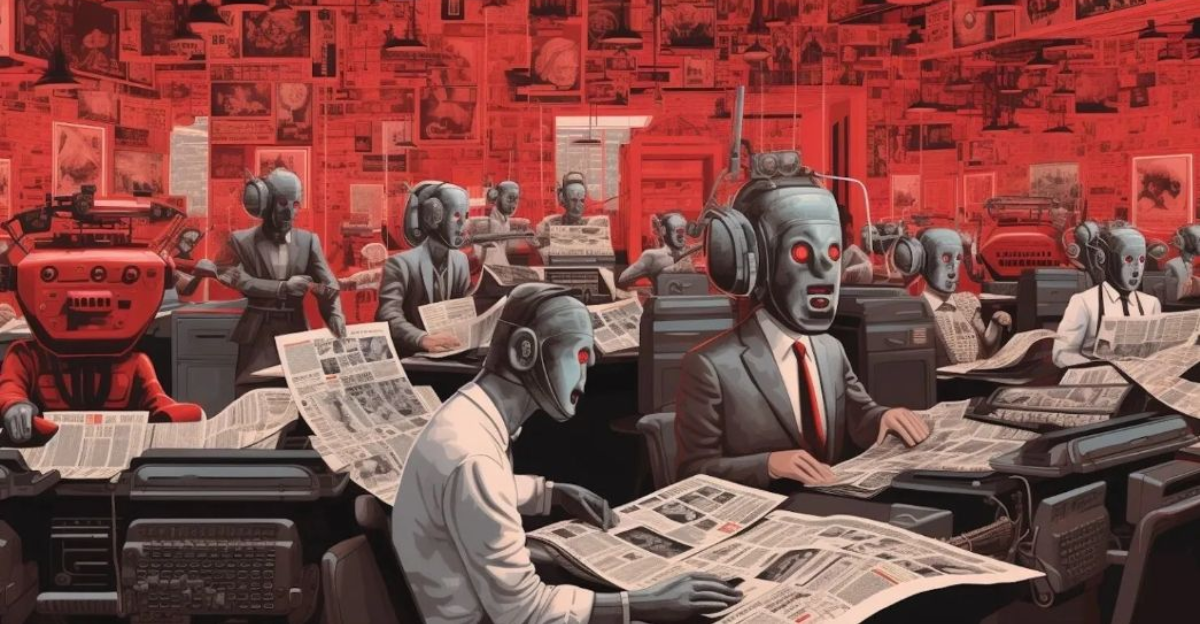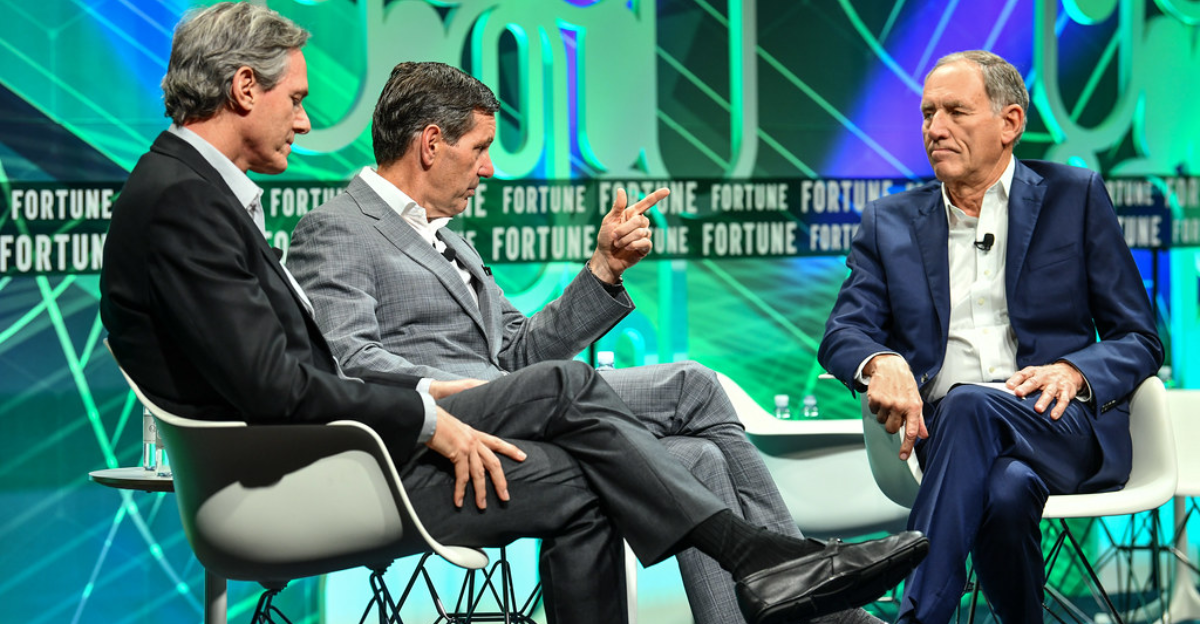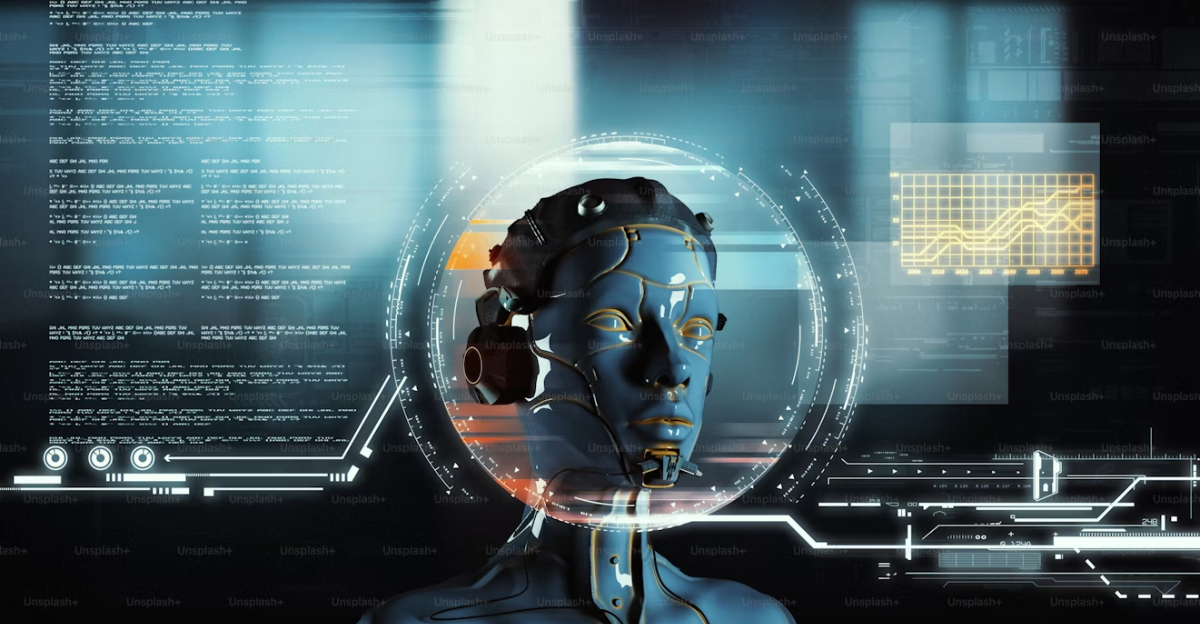
A major shift is happening across the entire news industry, with new tech now changing how news works. The usual tasks that people do, like writing basic stories or organizing information, can now be done by digital tools, specifically AI. With this, companies responsible for newspapers, TV stations, and online news sites, even big and famous ones, are heavily affected and need fewer and fewer human workers. Media companies must use this new tech to stay competitive while saving money, but unfortunately, this means that many journalists and news workers are losing their jobs.
The Quiet Rise of Automation in Newsrooms

AI is quietly changing the newsrooms: smart computer programs now help journalists by analyzing data, writing simple stories, and customizing news for their readers. With nearly 3 out of 4 news companies worldwide using AI tools, creating news becomes faster and cheaper, but it also means that these organizations don’t need as many human workers for some jobs. Sure, AI helps journalists work more efficiently, but it’s also replacing some traditional newspaper and TV jobs. We’re now unsure what kinds of jobs there will be in the news industry in the near future.
When AI Crosses the Line of Helping

AI’s contribution to the news industry started as a helper, doing boring tasks so journalists can focus on the headliners, the more important stories, but now, AI can already write rough article drafts and do quick fact-checks. Many people start to ask a lot of questions: if news companies rely too much on AI, what would happen to the human journalists? Will they be fired? Will they be completely replaced? Can machines even tell stories as well as humans? What will happen to the more personalized and creative side of reporting? Ethical concerns also surfaced about whether the stories are made by machines and if they accidentally include biases and errors in the news.
Who’s Been Hit by the Disruption So Far?

Many major news companies are already cutting jobs because of AI. For example, Business Insider laid off 21% of its staff, and Microsoft cut over 15,000 jobs as they invested more in AI technology. Recently, Fortune Magazine reported that they fired 10% of their workers, with fewer website visitors and AI as their main reasons. And this isn’t just happening in the news industry…companies in different sectors are now using AI to replace workers and reduce expenses, making America’s journalists and other media workers increasingly worried if they’ll still have a paycheck next payday.
Inside the Fortune’s AI Gamble

Fortune’s action to cut 10% of their staff is a direct response to two major pressures: the rapid rise of AI and a drop in their online views. For the company’s management, this is a move disguised as a gamble so that they can produce content more efficiently and still stay competitive in the fast-changing media landscape. By including more AI tools in their everyday editorial work, Fortune aims to improve their operations and adapt to how people consume news today. This once-quiet push for automation is a part of embracing new tech, even if it means difficult staffing decisions now.
An Internal Memo Confirms the Cut

Fortune’s CEO, Anastasia Nyrkovskaya, recently sent an internal memo that discloses the major cutback on the workforce. Out of 360 employees, 10% of the company will be laid off. This memo clarified that the difficult decisions are actually needed for the company to respond to the evolving tech and remain financially able. The CEO pointed out that these layoffs are a pivotal step to guarantee the publication’s long-term survival as AI continues to reshape the entire media industry.
Inside Fortune’s Layoffs and What They Reveal

Fortune’s writers, editors, and support staff were affected by the job cuts, and they’re now concerned about the security of their jobs and how AI will change their work in the future. This situation shows how quickly AI can modify workplaces, which causes sudden and big staffing changes. Writers and editors are especially nervous because they might lose creative control over their craft as computers take over more of the news-making process. The cuts show that AI isn’t just replacing simple tasks anymore but affecting all kinds of jobs in news companies, leaving human workers unsure of their future careers.
Why This Matters: A Symbolic Shift for Journalism

What happened with Fortune and its workers shows that even long-established news companies are now using AI instead of people. The pressure is on for the news industry because they have to choose whether to incorporate tech in their system or get left behind by the system. Journalists are now becoming more like managers who work with AI to arrange information instead of just writing stories. And while AI makes work faster and cheaper, people worry it could mean less thorough reporting and fewer different viewpoints in the news. This reflects a huge shift in how news will be developed and how people will read it in the coming years.
The Public Ripple Effect: What’s at Stake for Americans

When news companies fire reporters, there are fewer people who will cover local stories and look into important issues that affect regular Americans. AI can write stories fast, yes, but they might make mistakes, miss important details, or lack the personal insight that makes effective reporting powerful. If computer-generated news becomes normal, people will worry more about whether stories are true and fair and who’s responsible when something goes wrong. How Americans get their news and whether they believe it could change a lot as companies favor computers over human journalists, and this affects everyone’s ability to stay truly informed about what’s happening.
What the Future Holds for Media and AI

The news industry will change even more as companies use AI to work faster. Additionally, these tools are now developing skills to create videos, translate languages instantly, and help news websites better connect with readers. AI-related jobs might appear, but many traditional positions could vanish forever as newsrooms go digital. Now, the big challenge here is striking a balance between using AI to be more effective and keeping human creativity and decision-making as the vital parts of journalism. News organizations must learn how to use technology without losing the unique qualities of excellent reporting.